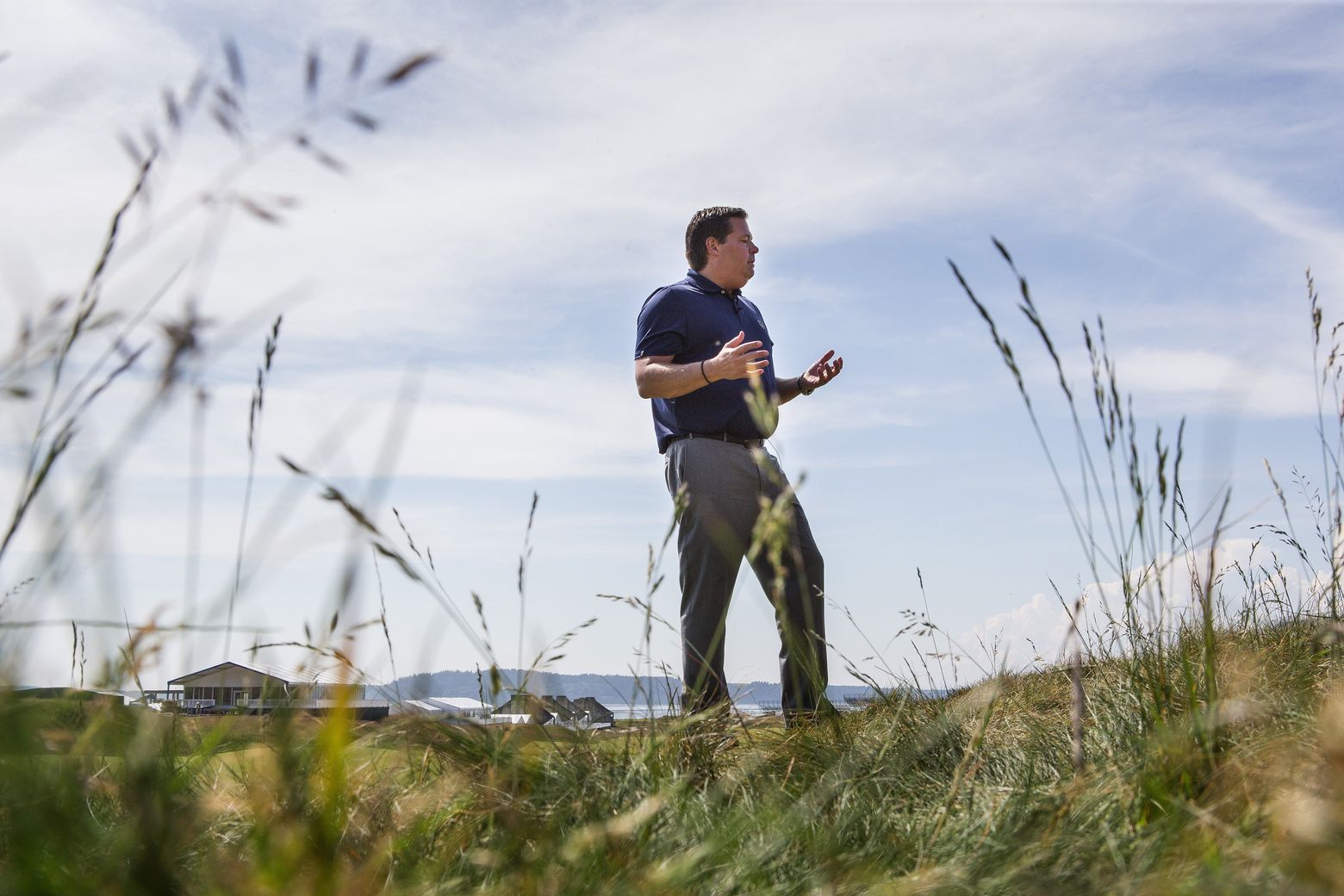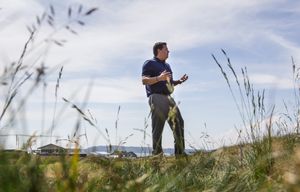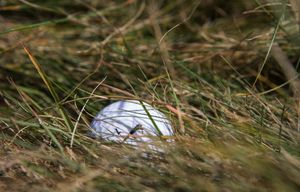Officials hope U.S. Open golfers will be fans of fescue grass at Chambers Bay
The pressure is on for the fescue at Chambers Bay to get good grades from the best golfers in the world during the June 18-21 U.S. Open.
This isn’t your father’s golf grass at Chambers Bay. Well, it isn’t unless he is from the British Isles.
This grass is fescue, and it is one of many reasons this U.S. Open, to be played June 18-21 in University Place, is special. This will be the first time in its 115 years that the tournament will be played on fescue. Fescue fairways, fescue greens, fescue rough. A regular fescue festival involving four strains of the grass, with two strains on fairways and greens and two for the rough.
So what’s the big deal about fescue?
JUNE
Pretend for a minute that grass is wine and you are with wine experts. Guess what many of them are ordering? That’s right, fescue.

- Chambers Bay set to join the elite when it hosts U.S. Open
- So far, plenty of opinion about Chambers Bay as a U.S. Open course
- Officials hope U.S. Open golfers will be fans of fescue grass at Chambers Bay
- Local caddie in a seet spot at Chambers Bay for U.S. Open
- Seattle native Fred Couples hopes to qualify for U.S. Open
- U.S. Open: Army of volunteers ready to be 'courteous until it hurts'
USGA executive director Mike Davis can sound like the president of the Fescue Fan Club.
“It’s a great grass to play golf on because it doesn’t have any tackiness to it,” Davis said at the tournament’s media day in April. “It’s a thin blade of grass, round, and when the ball hits it — while a lot of other grasses will kind of grab it — on fescue it skids.
“And what that means is, when you’re playing golf you’ve got to think about what happens when your ball hits, where it’s going to bounce and roll to. So it’s a fascinating grass on which to play.”
Larry Gilhuly of Gig Harbor, the West Region agronomist for the USGA, said fescue thrives best in three locations — the British Isles, New Zealand and the marine zone of the Pacific Northwest.
Like many of the players in the U.S. Open, fescue has its strengths and weaknesses.
Devin Bevard, championship agronomist for the USGA, said strengths of this slow-growing grass are that it requires less water and fertilizer and provides a fast, true roll.
Because fescue doesn’t grow fast, it doesn’t require frequent mowing. That’s one reason British courses, particularly those on tight budgets, like it.
However, the No. 1 concern with fescue is that “it is susceptible to traffic stress,” Bevard said.
In other words, too many feet beat it up.
That susceptibility is why Chambers Bay is a “walking course” allowing only disabled recreational players to use motorized golf carts. It also is why the course was closed four days a week during winter and early spring.
“I was here in November,” Bevard said. “You had bare areas heading into the winter. If you had been doing a full slate of golf all winter long, it wouldn’t have got any better, that’s for sure. … But they did all the right things.”
The “they” he refers to are course owner Pierce County, operator Kemper Sports and the Chambers Bay greenskeeping crew headed by director of agronomy Eric Johnson and superintendent Josh Lewis.
The relationship between golf turfgrass and the professionals is fine-tuned. Lewis said he makes it a point to walk a lot on the course and said his feet transmit information to his brain about the health of the grass. He said when he was an intern Gilhuly told him, “Don’t ever stop walking around.”
One trait of fescue is that it doesn’t stay green in hot months. It can turn brown but still be playable. Chambers Bay was brown in 2010 when the U.S. Amateur was played in August. June is a transitional month, so it should be more green than brown. Still, don’t expect fans to say, “I want my lawn to look like that.”
Gilhuly noted that fescue isn’t as dense as other grasses and said, “You can’t mow this grass low.”
Chambers Bay is a “links course” because it is built on sand near the sea, has firm fairways that give golfers the option “to run” shots rather than fly everything to the green, and doesn’t have trees (well, one tree).
For the record, Gilhuly notes that there is a small amount of colonial bent grass in the mix at Chambers but “not much” and it is used to fill in at some low, wet areas.
Fescue grass was a selling point in Chambers Bay getting the 2015 U.S. Open.
Davis has noted that the national championship at Chambers Bay is going to “feel like a British Open, but even British Opens do not have all fine fescue putting greens. The vast majority of the golfers will not have played on fine fescue greens. It has a different look to it. When you watch a putt, it doesn’t bounce. It’s firm, but they roll beautifully.”
Chambers Bay greens will be the scene of a silent agricultural battle in years ahead as other grasses, notable poa annua (usually called just “poa”), try to take over.
Gilhuly said a new product is being marketed that claims to be able to remove undesirable grass from the greens while not harming the fescue. If the product can do that, it would appear to have a future at Chambers Bay. Meanwhile, the pressure is on for the fescue at Chambers Bay to get good grades from the best golfers in the world.
The stakes for a successful U.S. Open are high. Chambers Bay wants to become part of the loose rotation of courses for the Open, which means millions of dollars in golf tourism. Few things could sabotage that effort more than legitimate golfer complaints about bad grass, especially bad greens.
If the grass at Chambers Bay could understand pep talks, it would be getting plenty of them.




